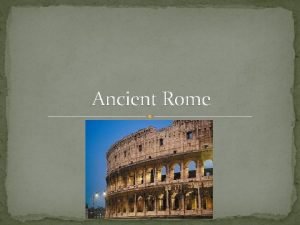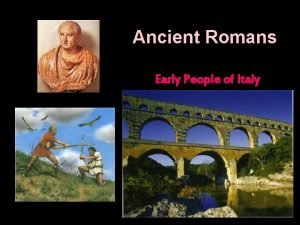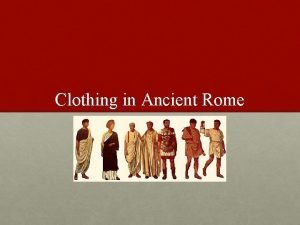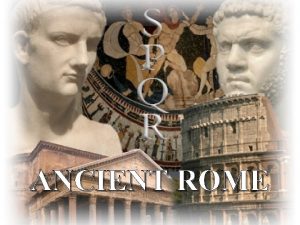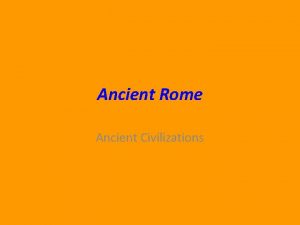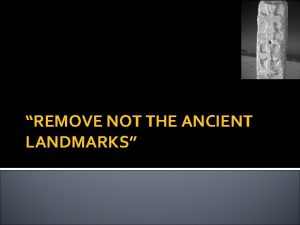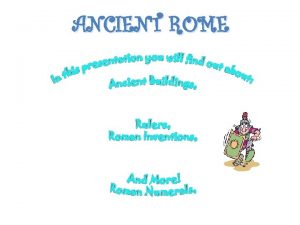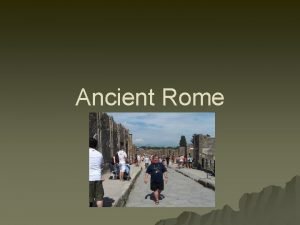Ancient Rome Landmarks in Rome Some famous landmarks










- Slides: 10

Ancient Rome

Landmarks in Rome �Some famous landmarks in Rome were the Colosseum, a building used for entertainment, the Roman Baths, which was kind of like a spa, the Circus Maximus, or a chariot racing track, and the Catacombs. The Catacombs were an underground burial place.

Colosseum

Roman Baths �The baths had hot and cold pools, towels, slaves to wait on you, steam rooms, saunas, exercise rooms, and hair cutting salons. They had reading rooms and libraries, as among the freeborn, who had the right to frequent baths, the majority could read.

Roman Baths (CONT) � The Public Baths were extremely popular. The people loved them. � At one time, there were as many as 900 public baths in ancient Rome. Small ones held about 300 people, and the big ones held 1500 people or more! � A trip to the bath was a very important part of ancient Roman daily life. � In all but the largest baths, there were separate hours for men and women. The women's time slot was apparently much shorter, so that women probably had to be more careful scheduling. But larger baths had duplicate facilities.

Roman Baths (CONT) �The ancient Romans might visit the baths first, and then wander down to the Forum, although many did prefer to get their shopping done early. �They even had stores, selling all kinds of things. People sold hot fast food. The baths were arranged rather like a very large mall, with bathing pools. �Children could not use the baths, but sometimes slaves could use them. �There was an admission charge to use the baths. �The baths are no longer in use today. There was a swimmer in 1978 that contracted meningitis and died.

Circus Maximus �In the 6 c BCE (about 2, 500 years ago!) the ancient Romans built the Circus Maximus in the city of Rome. �Basically, the Maximus was a race track. It was designed to race chariots. �Women could attend the races. They could sit with men. That was very unusual.

Circus Maximus (CONT) �The original Circus Maximus was built out of wood. It burnt down a couple of times. During the Roman Empire, the Circus Maximus was rebuilt using marble and concrete (an ancient Roman invention!). �The Circus Maximus was the most well known race track. �It could seat over 250, 000 people! Admission was free. Anyone could attend the races, including Rome's poor. There were races every day. It was the height of success to race in the Circus Maximus.

Catacombs

Catacombs (CONT) � The Catacombs of Rome are ancient catacombs, underground burial places under Rome, Italy. � There at least forty, some discovered only in recent decades of which are most famous for Christian burials, either in separate catacombs or mixed together. � They began in the 200 C. E. mainly as a response to overcrowding and shortage of land. � The Christian catacombs are extremely important for the art history of Early Christian art, as they contain the great majority of examples from before about 400 C. E. , in sculpture, as well as gold glass medallions (these, like most bodies, have been removed). � The Jewish catacombs are similarly important for the study of Jewish art at this period. A number of dubious relics of catacomb saints were promoted after the rediscovery of the catacombs.
